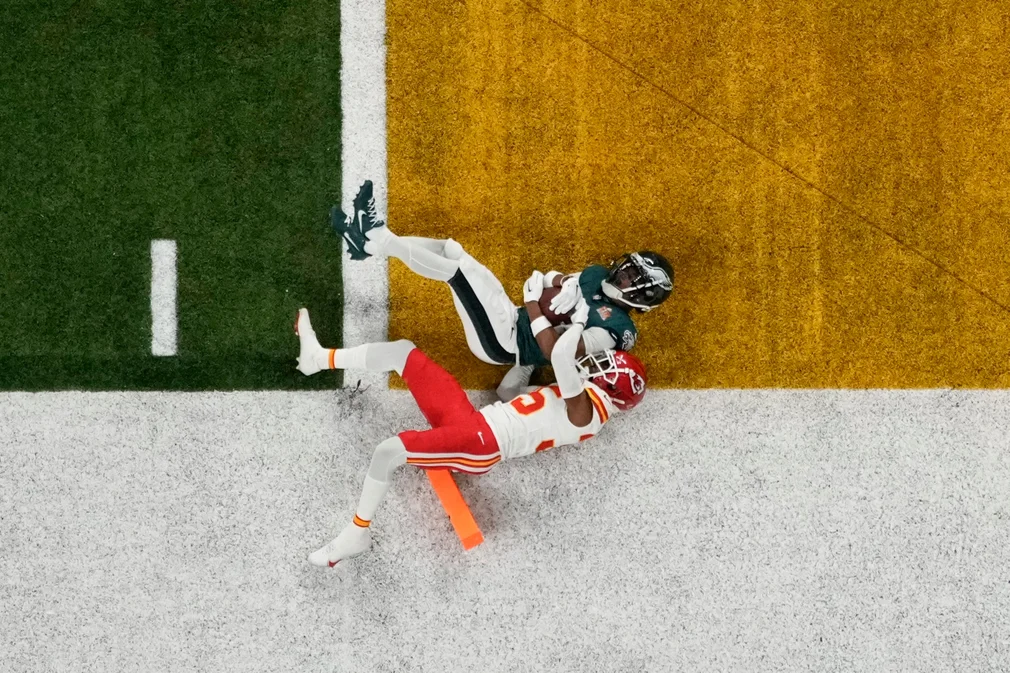Every February, the marketing industry collectively loses its mind over the Super Bowl. LinkedIn becomes a tsunami of ad rankings, hot takes, and frame-by-frame analyses of every celebrity cameo and cultural reference. The trade press breathlessly reports on which brands "won" the big game, as if creative directors were competing alongside the Chiefs and 49ers.
But here's a question worth asking: how many marketers in the UK's "marketing majority" – those managing budgets between £1-100m – are actually paying attention? Beyond professional curiosity, does this annual celebration of marketing excess offer any meaningful lessons for brands that measure their media budgets in thousands rather than millions?
This year's Super Bowl featured 51 minutes of advertising time, equivalent to approximately 102 30-second ads. To put that in perspective, that's $714 million worth of media spend compressed into less time than it takes to watch an episode of The Traitors. When you add in production costs and talent fees (hello, Matthew McConaughey), we're looking at nearly a billion dollars of marketing investment fighting for attention in a single evening.
When 102 ads fight for attention in 51 minutes, even remarkable work gets lost in the noise. It's like trying to have a meaningful conversation at a rock concert – you might have something brilliant to say, but good luck getting anyone to hear it. Or perhaps more accurately, it's like trying to stand out at a party where everyone has hired a celebrity to be their wingman.
At $7 million per 30-second slot (before production costs), the Super Bowl has become what one industry observer aptly called an "industrial media complex" - a system that justifies its own existence through circular logic. The premise? That attention at scale, regardless of quality, is inherently valuable. It's the marketing equivalent of setting fire to a pile of cash while insisting it's actually a sophisticated warming strategy.
But here's where it gets interesting. While the industry obsesses over these showpiece moments of marketing excess, UK marketers are quietly mastering what we call "the new body language of brand building" - delivering impressive business results through smart, strategic approaches to scale in today's fragmented landscape.
Think of it as a more sophisticated dialect. The old language of brand building was simple: buy enough reach through mass media, and growth will follow. But that's like trying to be heard by shouting louder in an already deafening room. Today's most effective brand builders are orchestrating multiple channels in harmony, creating unexpected moments, and moving at the speed of culture.
Smart scale in action
While the industry obsesses over Super Bowl ad rankings, some of the most impressive brand building work is happening far from the spotlight. what3words combines owned media, strategic VOD buys, and partner-led campaigns to punch well above their weight class, with their newsletter acting as a primary brand building channel - proving you don't need Super Bowl-sized budgets to build meaningful connections.
MOJU and Who Wot Why have turned the dreary January commute into their own Super Bowl moment. Their brilliantly simple three-word mnemonic - WAKE SHAKE BOOM - has driven a 20% increase in household penetration. Their latest campaign will reach over 10 million people through high-impact placements across Manchester and London, supported by 150,000 product samples.
Working with Insiders, Geeta's has just claimed the title of fastest-growing mainstream Indian ambient brand without a Super Bowl-sized budget in sight. With a £1.5 million investment (roughly what you'd pay for 7 seconds of Super Bowl airtime), their "Geeta Bit Naughty" campaign has driven a 27% increase in both sales and brand market share through smart outdoor media planning across nearly 1,000 UK sites.
A better way to spend $7 million
The Super Bowl advertising spectacle offers a timely reminder: when 102 brands shout simultaneously, nobody wins - except perhaps the platform selling the megaphone. For the marketing majority, the real opportunity lies in being strategically smarter rather than financially louder.
After all, if you can't articulate a better strategy than "being one of 102 flashing logos with a celebrity attached", perhaps that $7 million could be better spent elsewhere. For the price of a 30-second Super Bowl spot, you could fund a year of smart, targeted campaigns that actually move the needle on both mental availability and sales.
The real game
Sometimes the grumpiest takes are also the wisest. And in this case, the cynicism around Super Bowl advertising excess points us toward something more interesting: while everyone debates which celebrity cameo "won" the Super Bowl, smart marketers are quietly reimagining what effective brand building looks like in 2025.
The real question isn't "could we afford a Super Bowl ad?" but rather "how could we create Super Bowl-sized impact without Super Bowl-sized budgets?" That's the puzzle the marketing majority is solving every day, with solutions far more interesting than another celebrity-studded 30-second spot.
Perhaps that's the real game worth watching.

.avif)



.jpg)
.jpg)
